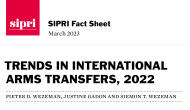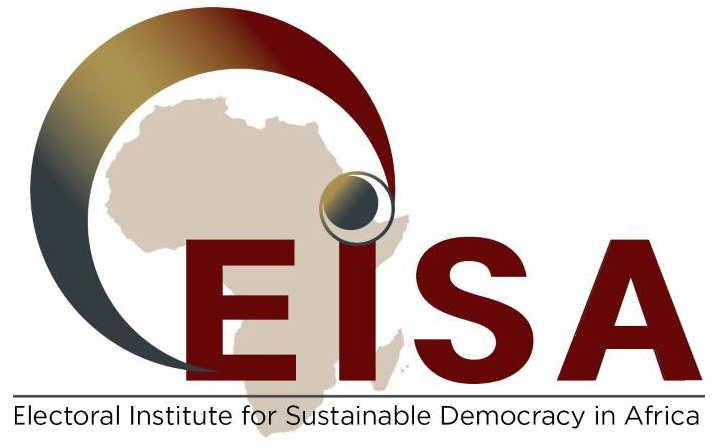The 2022 Trends in International Arms Transfers report by the Stockholm International Peace Research Institute (SIPRI) gives a snapshot of the global arms market. It details top arms dealers and buyers, regional breakdowns, and how the trade has changed. The report shows a 5.1% drop in significant arms transfers from 2013–17 to 2018–22 but a 4.8% rise compared to 2008–12. The US, Russia, France, China, and Germany were the most significant arms exporters, delivering 76% of the world’s total. European imports rose by 47% from 2013–17 to 2018–22, with European NATO states upping their implications by 65% due to a worsening security situation. The report ends by saying that these shifts in arms transfers could affect global security, regional stability, and the power balance among key arms exporters and importers.
The main trends in international arms transfers highlighted in the report are as follows:
- Overall, the volume of international transfers of major arms in 2018–22 was 5.1% lower than in 2013–17 and 4.8% higher than in 2008–12.
- The five largest arms exporters in 2018–22 were the United States, Russia, France, China, and Germany, supplying 76% of the world’s arms exports.
- US arms exports accounted for 40% of the global total in 2018–22 and were 14% higher than in 2013–17, while French arms exports increased by 44% during the same period. In contrast, Russian, Chinese, and German arms exports decreased.
- The central recipient region in 2018–22 was Asia and Oceania, followed by the Middle East, Europe, the Americas, and Africa.
- Arms imports by European states were 47% higher in 2018–22 than in 2013–17, with European NATO states increasing their arms imports by 65% in response to the deteriorating security environment in the region.
The changes in arms exports of the top five exporters over the years are as follows:
- US arms exports accounted for 40% of the global total in 2018–22 and were 14% higher than in 2013–17.
- French arms exports increased by 44% between 2013–17 and 2018–22.
- In contrast, Russian arms exports decreased by 31%, Chinese by 23%, and German by 35% during the same period.
Key Figures:
- The volume of international transfers of major arms decreased by 5.1% between 2013-17 and 2018-22, while arms imports by European states increased by 47% during the same period.
- The five largest arms exporters in 2018-22 were the United States, Russia, France, China, and Germany, supplying 76% of the world’s arms exports. The United States accounted for 40% of the global total.
- The five largest arms importers in 2018-22 were India, Saudi Arabia, Qatar, Australia, and China, receiving 36% of the world’s arms imports. Saudi Arabia was the second-largest arms importer, with the USA supplying 78% of its arms imports.
- Arms imports by European NATO states were 65% higher in 2018-22 compared to 2013-17. Ukraine became a major arms importer in 2018-22.
- Kuwait’s arms imports increased by 146% between 2013-17 and 2018-22, mainly from the USA and Italy.
Key Points:
The report attributes the decline in arms transfers to several factors, including:
- End of significant conflicts in the Middle East
- Economic slowdown in some regions
- Shifting priorities of importing countries
- The report also highlights the growing trend of arms transfers between developing countries.
- Concerns are expressed regarding the potential for destabilization and regional arms races due to increasing arms transfers.
Global Trends
While there is a slight downturn, the overall volume remains high, highlighting the continued significance of the arms trade in international relations and security dynamics.
Key regional trends
- Europe: Arms imports surged by 47%, primarily driven by concerns over the evolving security landscape, particularly the war in Ukraine. Germany, Norway, and the Netherlands witnessed significant increases.
- Middle East: Despite a decline of 8.8%, the region remains the largest arms importer, accounting for 37% of global imports. Saudi Arabia and Egypt continue to be significant recipients.
- Asia and Oceania: Imports dropped by 7.5%, with India and Australia remaining the significant importers. Concerns over South China Sea and Taiwan Strait tensions contributed to this trend.
- Africa: A drastic reduction of 40% was observed in arms imports, attributed to economic challenges and the decline of significant conflicts.
- Americas: Imports fell by 21%, with the United States and Brazil experiencing notable decreases.
Major exporters and importers
- United States: Maintained its position as the top arms exporter, accounting for 39% of global exports.
- Russia: Followed as the second largest exporter, supplying 19% of global exports.
- France: Remained third with 11% of global exports.
- China: Increased its share to 9.4%, consolidating its position as the fourth-largest exporter.
- Germany: Rounded out the top five with 5.3% of global exports.
Implications and concerns:
The report highlights several potential consequences of the current trends in arms transfers:
- Heightened regional tensions and instability: Increased access to sophisticated weaponry can exacerbate existing conflicts and fuel new ones.
- Diversion of resources: Resources allocated to arms procurement could be redirected towards addressing pressing global challenges like climate change and poverty.
- Undermining of arms control efforts: Unregulated arms transfers can undermine existing treaties and agreements to limit the proliferation of weapons.
Concludes by underscoring the necessity for international cooperation and dialogue to address these issues and foster responsible arms transfers. This involves implementing stricter regulations, promoting transparency, and backing conflict resolution and disarmament initiatives.




